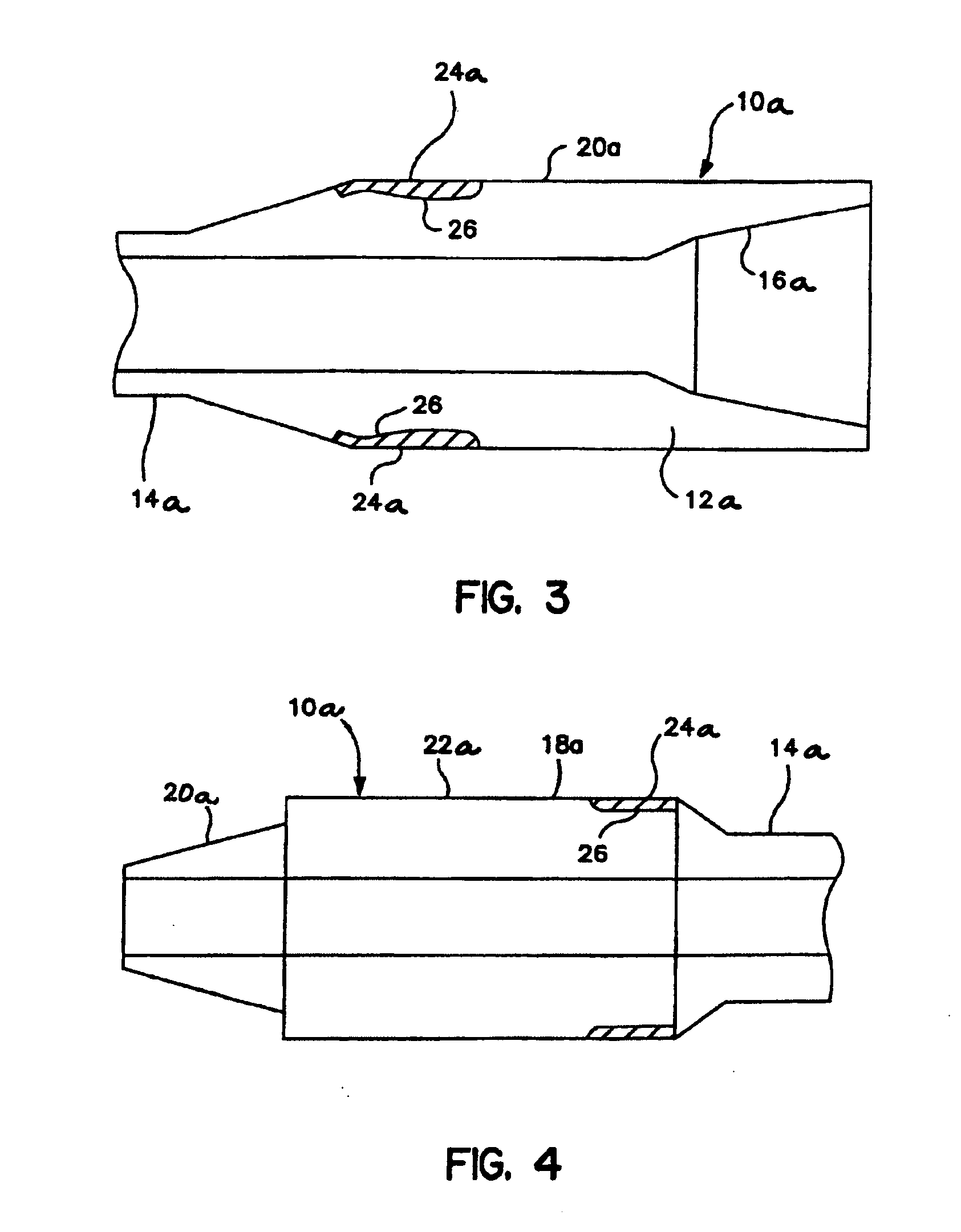Balanced Composition Hardfacing Alloy
a hardfacing alloy and composition technology, applied in the field of hardfacing alloys, can solve the problems of affecting the performance of hardfacing materials. , to achieve the effect of minimizing the induced casing wear, maximizing the tool joint resistance in the casing, and great protection from abrasion
- Summary
- Abstract
- Description
- Claims
- Application Information
AI Technical Summary
Benefits of technology
Problems solved by technology
Method used
Image
Examples
first embodiment
[0031]the hardfacing composition comprises by weight about 0.45 to about 0.8 percent Carbon, about 3.5 to about 4.5 percent Boron, about 0.8 to about 1.25 percent Manganese, about 4.5 to about 6.5 percent Niobium, about 0.6 to about 0.8 percent Silicon, about 2.0 to about 2.5 percent Nickel, and the balance Iron with impurities as trace elements.
[0032]The first embodiment hardfacing alloy composition has an all weld hardness of from about 63 Rc (772 Hv) to 66 Rc (865 Hv), an average hardness single layer on industrial products, such as tool joints and drill stabilizers of about 595 Hv, a quadratic crystallographic boride and eutectic structure, a balance of metal to metal and abrasion resistance, and is capable of being deposited in single and double layers on top of itself or on pre-existent hardband alloys, such as tungsten carbide deposits.
[0033]The chemical analysis of an alloy composition of the first embodiment is set forth in the following table 1.
TABLE 1Carbon0.8%Boron4.0%Ni...
second embodiment
[0035]In a second embodiment, the hardfacing alloy has an undiluted (all weld metal) composition by weight of about 0.9 to about 1.1 percent Carbon (C), about 1.1 to about 1.4 percent Manganese (Mn), about 1.1 to about 1.4 percent Nickel (Ni), about 2.0 to about 2.5 percent Niobium (Nb), and about 1.1 to about 1.5 percent Boron (B). The Silicon (Si) content, when deposits are made under CO2 or 75 percent Argon and 25 percent CO2 gas shields, is about 1 percent, and is considered incidental. The remainder is Iron (Fe), including impurities as trace elements.
[0036]The hardfacing alloy of the second embodiment in undiluted condition has a hardness of from about 53 Rc (565 Hv) to about 58 Rc (653 Hv), with about 55 Rc (590 Hv) average. Its hardness, when welded in a single layer on a typical high Carbon tool steel joint, typically ranges from about 51 Rc (528 Hv) to about 55 Rc (590 Hv), with about 53 Rc (565 Hv) average. The undiluted alloy does not contain any substantial amount of Ch...
PUM
| Property | Measurement | Unit |
|---|---|---|
| Fraction | aaaaa | aaaaa |
| Fraction | aaaaa | aaaaa |
| Fraction | aaaaa | aaaaa |
Abstract
Description
Claims
Application Information
 Login to View More
Login to View More - R&D
- Intellectual Property
- Life Sciences
- Materials
- Tech Scout
- Unparalleled Data Quality
- Higher Quality Content
- 60% Fewer Hallucinations
Browse by: Latest US Patents, China's latest patents, Technical Efficacy Thesaurus, Application Domain, Technology Topic, Popular Technical Reports.
© 2025 PatSnap. All rights reserved.Legal|Privacy policy|Modern Slavery Act Transparency Statement|Sitemap|About US| Contact US: help@patsnap.com



